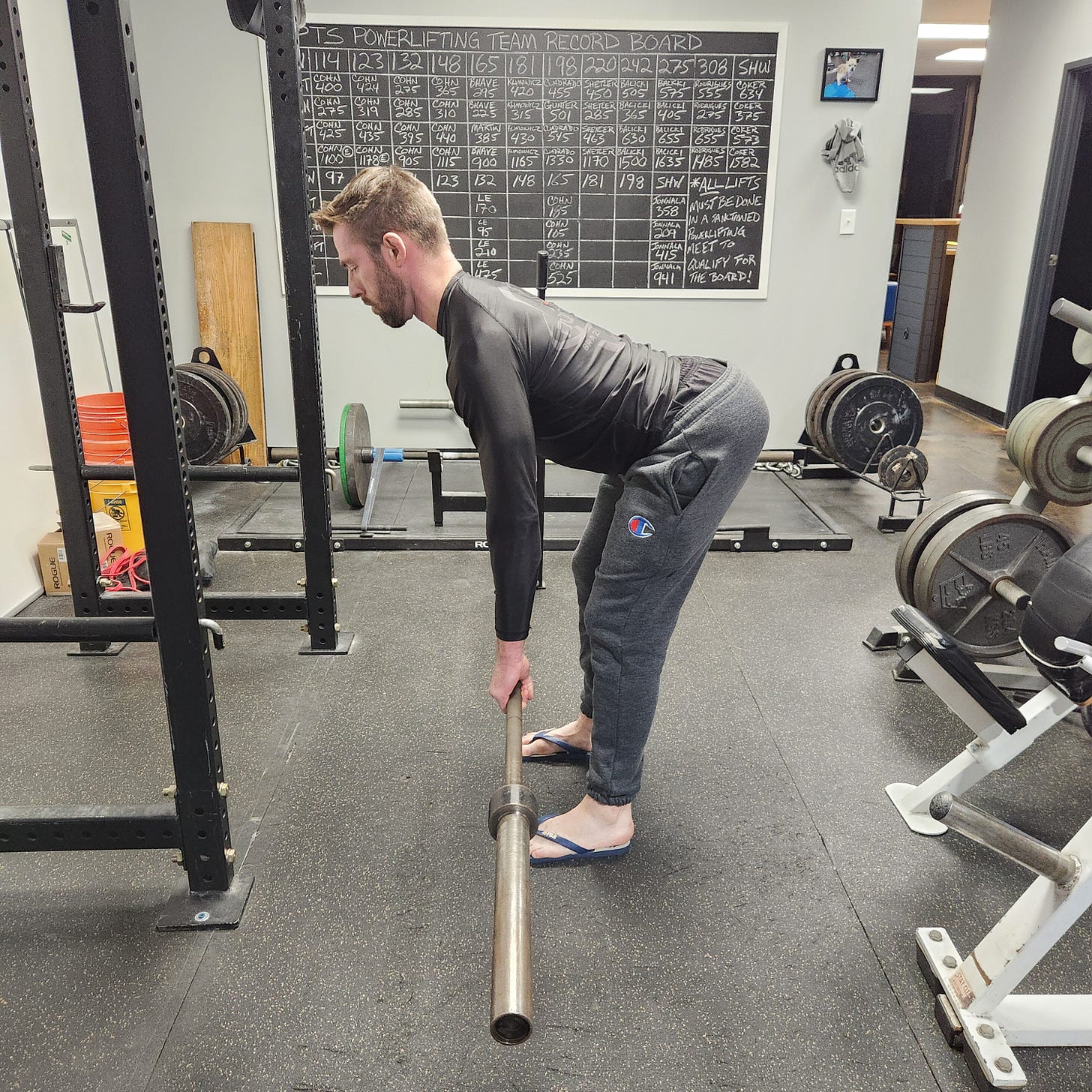The Seven Movement Patterns Part 3: Hip Hinge
“You can bend, but never break. Stay unbreakable!” -Rachele Brooke Smith
The movement pattern we are looking at in this week’s article is the hip hinge. The hip hinge involves the flexion and extension of the hip joint making it a movement that primarily involves the hamstrings, glutes, and lower back muscles. There are some exercises that incorporate knee flexion along with hip extension that I will include in this category as well.
Some common hinge exercises are the Romanian deadlift (RDL), good morning, single leg RDL, step up, 45-degree back extension, glute / hamstring raise (GHR), Nordic curl, reverse hyper extension, and kettlebell swing.
One of the more difficult aspects of learning the hip hinge movement is keeping the spine locked and braced in a neutral position. It is much easier to learn the hinge if you focus on sitting back with the glutes instead of simply bending over. Due to the bracing required for many of these exercises, the hinge often recruits other muscles of the torso such as the rectus and oblique abdominal muscles.
For most hinge variation exercises I recommend 2-4 sets of 6-12 reps and along with the squat and single leg squat movement patterns, works the majority of the lower body muscle groups. I will usually add in smaller single joint exercises for the muscles around the ankles, knees, and hips depending on client needs as well.
We will continue this movement pattern series next week with the push pattern.
I hope you enjoyed this article and until next time, stay strong and healthy!


